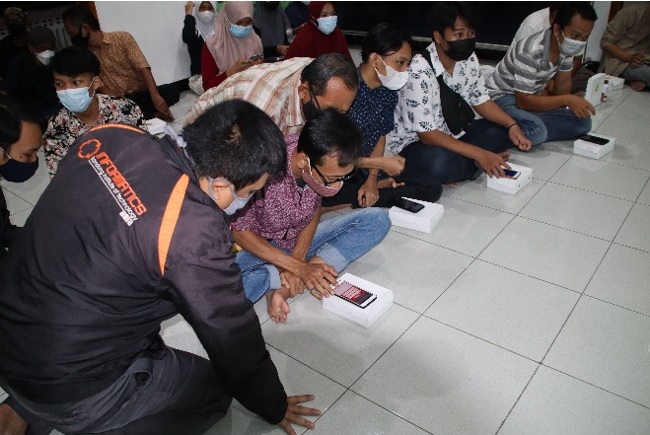Implementasi Panic Button Berbasis Android Sebagai Bentuk Kewaspadaan, Pencegahan, dan Keamanan Pada Masa Pandemi Covid-19
Main Article Content
Abstract
Crimes that are often reported in the mass media make people feel less safe, especially if you look at the number of crimes that occur every year. Based on data from the Central Statistics Agency (BPS) the number of crimes that occurred during the period 2017 – 2019 averaged 300,085 cases annually. Of the many problems that occur, it is necessary to use an appropriate application to disseminate emergency information by considering how the victim reports, the time it takes for the victim to report, and the accuracy of the reporting data. With the development of the Panic Button application, it is hoped that it will make it easier to contact the surrounding community in delivering an emergency. Where the system will send a notification to the user's cell phone and turn on an alarm. In its development, the author uses the Global Positioning System to get location coordinates, Firebase Push Notification as a notification message sender and Arduino Wemos D1 as an alarm system driving mechanism.
Article Details

Jurnal Pemberdayaan Masyarakat is licensed under a Creative Commons Attribution 4.0 International License.
References
BPS, B. P. S. (2020). Statistik Kriminal 2020 (2020th ed.). Badan Pusat Statistik.
Firew, T., Gebreyesus, A., Woldeyohannes, L., Ebrahim, F., & Patel, S. (2020). Human resources for emergency care systems in Ethiopia: Challenges and triumphs. African Journal of Emergency Medicine, 10, S50–S55.
Kannan, V. C., Tenner, A., Sawe, H. R., Osiro, M., Kyobe, T., Nahayo, E., Rasamimanana, N. G., Kivlehan, S., & Moresky, R. (2020). Emergency care systems in Africa: A focus on quality. African Journal of Emergency Medicine, 10, S65–S72.
Naikar, N. (1999). Work Domain Analysis for Training-System Definition and Acquisition. The International Journal of Aviation Psychology, 9(3), 271–290.
Wu, Q. (2020). Applications and theoretical challenges in environmental emergency issues alerting system on IoT intelligence. Computer Communications, 157, 361–368.
Zalenski, R. J., & Raspa, R. (2006). Maslow’s Hierarchy of Needs: A Framework for Achieving Human Potential in Hospice. Journal of Palliative Medicine, 9(5), 1120–1127.


